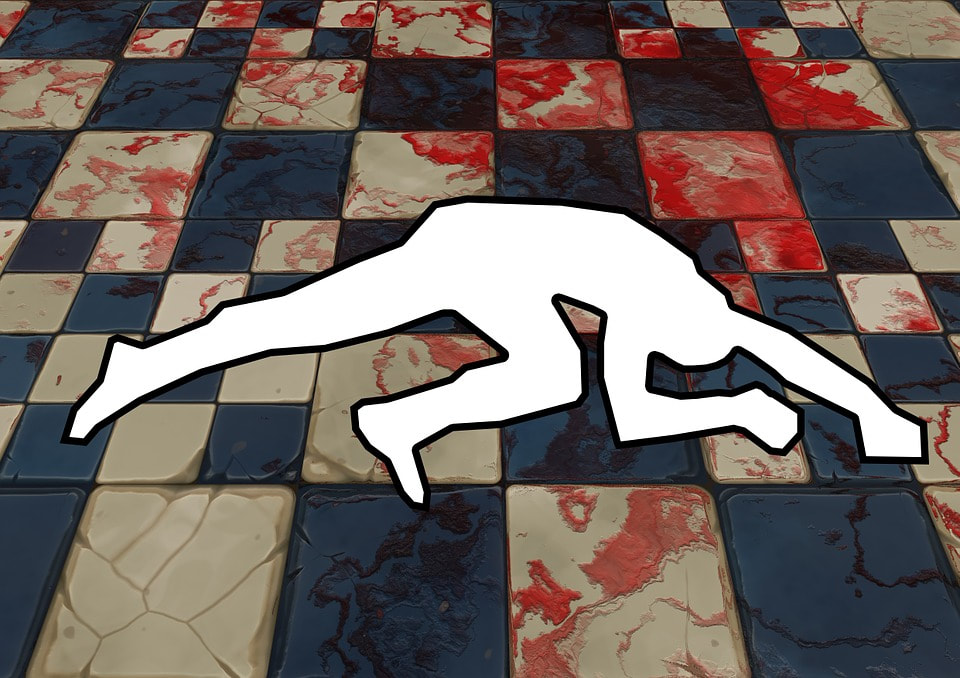|
Nominated BEST TRUE-CRIME PODCAST at British Podcast Awards 2018, The Telegraph's Top Five True-Crime Podcasts, The Guardian's Podcast of the Week and iTunes Top 25. Subscribe via iTunes, Spotify, Acast, Stitcher and all podcast platforms.
What’s the best way to clean up after a murder?
Today, we’ll be looking at how to effectively clean up blood, vomit, urine, faeces and semen, all key indicators which can link a perpetrator to a crime scene, or any night out in Newcastle. So, firstly, how can you superficially clean-up a murder scene so it’ll pass a visual investigation? Number #1 – Urine. Urine can contain cells which contain traces of DNA, occasionally blood and other characteristics useful for toxicology, chemical analysis and identification, and although it has a distinct odour, as urine is almost 100% water, it can be removed with the use of hot water and a household detergent. Number #2 – Faeces. Faeces can tell investigator many different details about the victim (as mentioned in Mini Mile #7) such as how, where, when and what they last ate, what drugs, alcohol or poisons are in their system, what disease they have, and even their mood at the time of their last meal, and although faeces also contains hydrochloric acid (from the stomach bile which destroys DNA), faeces also contains blood and skin from the bowel, intestines and anus, which are not destroyed. So, to remove faeces stains; if it is solid, it’s best to let it air-dry, pick it up and clean the area as you would with wee-wee, or if it’s not solid, treat it like vomit. Number #3: Vomit. Again, this contains hydrochloric acid, but also skin, blood and mucus from the digestive tract and mouth, so DNA can be present. Hospital cleaners advise sprinkling on baking soda, leaving it to dry and scraping off the excess vomit. Then mix one tablespoon of detergent, white vinegar and two cups of warm water and blot the stain until it is completely absorbed. Then sponge the area with cold water to remove the detergent/vinegar solution. Number #4: Blood. As any lady knows full well, if you get blood on your clothes, you never wash it out with hot water, or warm water, but cold water, as cold water helps the blood cells rehydrate. It’s also best to remove the stain while it’s still wet. And as with vomit, blood can be removed by sprinkling it with salt, letting the crystals absorb the blood and once it’s dry, you can hoover up the blood soaked crystals and blot the area until it’s dry. Obviously, when I say “hoover the area”, that’s a British colloquialism meaning to vacuum, and not hold J Edgar Hoover by the feet and make him lick it up. Although, I’m sure he would have done a great job. Number #5: Semen. Not something you want left at a scene, as although it is smaller in quantity (apparently), contains less harmless acids (unless you drink a lot of Pepsi), and it is an entire library of information for investigators and a DNA profile can be taken from it years and even decades later, semen is tricky to remove even at a high temperature, and after several washes it can remain, so I’m told. So a solution of hot water and strong bleach or detergent is needed, but bleach itself does leave a very obvious stain… which we’ll get into shortly, so stay-tuned you sex-pests. But this is all just superficial cleaning. It’ll pass a visual inspection, but – as you’ll know if you’ve listened to Mini Mile #1 - nothing more advanced, like Luminol. So where are the problems? Speed: you have to get to a stain quickly before it dries, if it’s still in a liquid form and contains higher levels of water, it’s easier to remove, but as its water content dries, it’s harder to erase. Water: when water is used to clean up a stain, if you leave it too long and don’t softly blot the area till it is completely dried, the water will leave a very clear stain, which (to an investigator) is as obvious as blood and shows that a clean-up has taken place. Bleaches: There’s two kinds in most home products; chlorine bleach and oxygen bleach. Chlorine bleaches can visually remove blood but Luminol will still show up the haemoglobin in the blood, even after several washes using chlorine bleach. Whereas an oxygen bleach uses a hydrogen peroxide, so after a few hours of soaking, it completely destroys the haemoglobin and can no longer be detected. But as with blood, the use of bleaches are evident, so although the DNA no longer exists, a clean-up is obvious as it leaves very visible marks and discolours any materials and even skin. Acids: hydrochloric, nitric and sulphuric pretty much destroy everything, whether DNA, skin, blood, semen, almost anything, but large quantities of acid are hard to come by (for the average person), its purchase leaves a trail and (again) it leaves a big stain. And finally, fire: Fires are easy to start, they require very little experience and it can destroy everything, but it is very obvious, and modern fire investigation skills can easily determine the difference between an arson and an accident, by the presence of accelerants, etc. One interesting way that investigators can determine if a fire was the work of an arsonist and who they were, is by searching the neighbouring bushes for human poo, as because serial arsonists get sexually excited by the sight of things burning, this causes them to need to poo.
If you found this interesting? Check out the Mini Mile episodes of the Murder Mile UK True-Crime Podcast, or click on the link below to listen to an episode.
Michael J Buchanan-Dunne is a writer, crime historian, podcaster and tour-guide who runs Murder Mile Walks, a guided tour of Soho’s most notorious murder cases, hailed as “one of the top ten curious, quirky, unusual and different things to do in London”, nominated "one of the best true-crime podcasts at the British Podcast Awards 2018", and featuring 12 murderers, including 3 serial killers, across 15 locations, totaling 50 deaths, over just a one mile walk
0 Comments
Your comment will be posted after it is approved.
Leave a Reply. |
AuthorMichael J Buchanan-Dunne is a crime writer, podcaster of Murder Mile UK True Crime and creator of true-crime TV series. Archives
July 2024
Subscribe to the Murder Mile true-crime podcast
Categories
All
Note: This blog contains only licence-free images or photos shot by myself in compliance with UK & EU copyright laws. If any image breaches these laws, blame Google Images.
|




